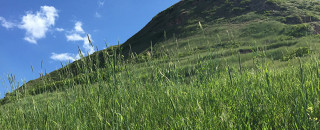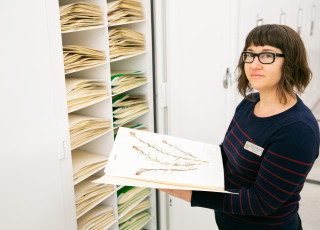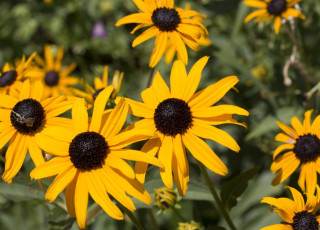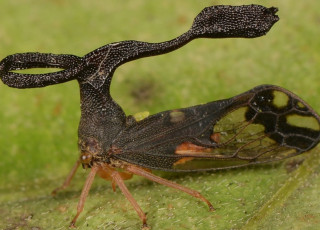Where the Black Widow Plays Near the Velcro Weed
By Michael Mozdy
Much rain fell in the weeks before, and the hillsides were flush with green. Our guides, Christy Bills and Elizabeth Johnson, gleefully led us through the Wasatch foothills on one of the final Wildflower Walks of the spring 2016 season. It was not hard for our group of 20-or-so to get caught up in the anecdotes and trivia they supplied. It doesn't hurt that Christy is the NHMU Entomology Collections Manager and Elizabeth is the NHMU Herbarium Collections Manager. They're such an engaging duo that with each plant or insect they identified, our group would chip in with the fact that someone found these in their garden, gnawing on potato leaves, or that someone else had called that dock plant "amaranth" for years.
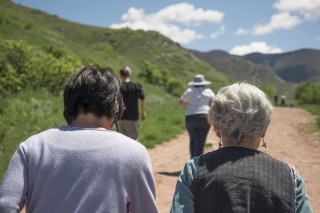
Photo courtesy Ann Whittaker @ utah.com
Honestly, it felt more like a hike with old friends than a bunch of strangers hugging the path on the Bonneville Shoreline Trail. All of our questions were answered patiently, and each time we stopped to touch, smell, or look, we were given facts to help us remember what we experienced.
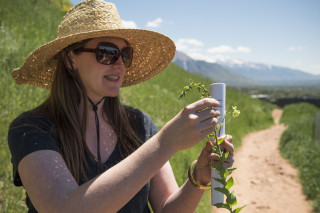
Photo courtesy Ann Whittaker @ utah.com
Elizabeth showed us how when you squeeze the flower heads of arrowleaf balsamroot, it smells like chocolate; how the cute seed pods that look like furry little rabbits’ feet are found on cousins of what ranchers call locoweed (Astragalus); and how that gorgeous white evening primrose flower and the mustard family can be recognized in part by their four-petaled flowers.
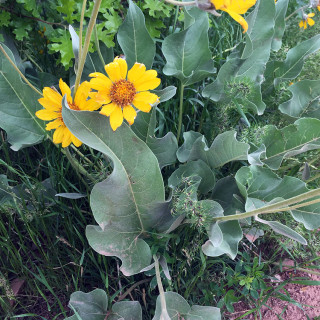
That's arrowleaf balsamroot, not a mini sunflower bush as I had always nicknamed it. Note how the leaves are indeed shaped like arrowheads!
Christy, bug net in hand, crouched along the trail and uncovered hidden insects everywhere – from the huge, black stink bug she stroked in her hand like a pet (in fact, she has a few of these at home she keeps as pets) to the black widow egg sack on the hillside, which, she pointed out, “was just caressed by a long black leg up in that hole.”
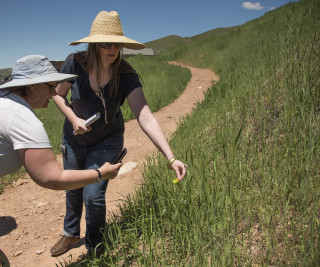
Photo courtesy Ann Whittaker @ utah.com
It was one of the best 45 minute short walks in the foothills I’ve had the pleasure of enjoying in a long time, and something not to be missed in the future. For now, I’ll be thinking about stone seed, velcro weed, antelope bitterbrush, velvet ants, Jerusalem crickets, and even black widows (they’re almost impossible to get to bite you, according to Christy) every time I hike in the foothills.
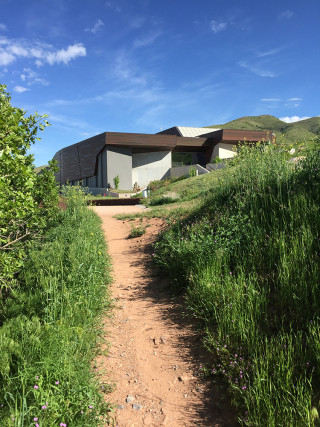
Wildflower walks are held in the spring, generally April-May, on Wednesdays – see the events calendar for more information.
Michael Mozdy is a Digital Science Writer for The Natural History Museum of Utah, a part of the University of Utah in Salt Lake City. Our mission is to illuminate the natural world and the place of humans within it. In addition to housing outstanding exhibits for the public, NHMU is a research museum. Learn more.
